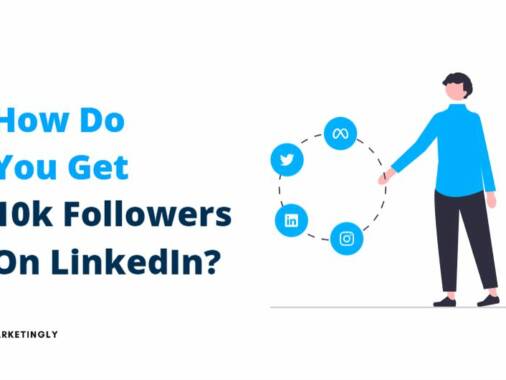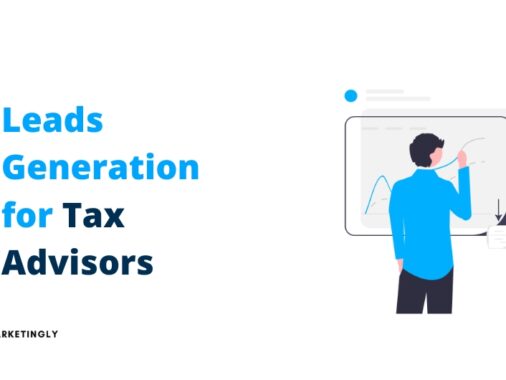As a business owner or marketing professional, you’ve likely heard the terms “Demand Generation” and “Growth Marketing” thrown around quite a bit. But what do these terms really mean, and how do they differ from one another?
In this blog post, we’ll delve into the differences between demand generation and growth marketing, exploring their key characteristics, tactics, and goals. We’ll also look at when it might make sense to use one approach over the other, and how these two approaches can be used together in a holistic marketing strategy.
By the end of this post, you’ll have a clear understanding of the differences between demand generation and growth marketing, and you’ll be able to determine which approach is best suited to your business needs.
Below is a list of all the topics we will cover in this guide. Go ahead and click on any of these links, and you’ll be taken to that specific section.
- What is Growth Marketing?
- Key areas of Growth Marketing
- What is Demand generation?
- Key areas of Demand Generation
- Difference between Demand generation vs Growth Marketing
- Conclusion
- Frequently asked questions about Demand Generation and Growth Marketing
What is Growth Marketing?
Growth marketing is a data-driven approach to marketing that focuses on continuously testing and optimizing marketing campaigns to drive sustainable, long-term growth. It involves a continuous cycle of testing, analyzing, and optimizing marketing efforts based on data, in order to drive growth over time.
Growth marketing is often focused on the entire marketing funnel, from attracting new customers to retaining and upselling existing ones. It may involve a variety of tactics, including A/B testing, customer research, and analytics, and it often involves collaboration across teams, such as marketing, product, and engineering.
There are several key areas of Growth Marketing, including:
- Customer acquisition: Growth marketing often focuses on attracting new customers through targeted marketing campaigns and tactics, such as paid advertising, content marketing, and social media marketing.
- Customer retention: Growth marketers also focus on retaining existing customers and increasing their lifetime value through tactics such as email marketing, upselling, and customer loyalty programs.
- Product and market fit: Growth marketers work to understand the needs and preferences of their target customers, and they use this information to optimize and improve their product offerings.
- Data-driven decision-making: Growth marketers rely heavily on data to inform their marketing decisions, using tools such as analytics and A/B testing to understand what works and what doesn’t.
- Collaboration across teams: Growth marketing often involves collaboration across teams, such as marketing, product, and engineering, in order to drive growth.
What is Demand generation?
Demand generation is the process of creating awareness and interest in a product or service in order to generate leads and sales. It involves identifying potential customers and creating demand for a company’s products or services through targeted marketing campaigns. Some common tactics used in demand generation include email marketing, social media marketing, content marketing, and events.
The goal of demand generation is to increase the number of leads and sales for a company, and it is often focused on the top of the marketing funnel, helping to attract and engage potential customers. Demand generation can be particularly effective for companies that have a new product or service to introduce to the market, or for companies that are looking to expand their customer base.
There are several key areas of Demand Generation, including:
- Targeting specific customer segments: By identifying and targeting specific customer segments, companies can create more targeted and effective demand-generation campaigns.
- Using a variety of marketing channels: A multichannel approach can help reach potential customers through a variety of channels, including email, social media, and content marketing.
- Providing valuable content: Providing valuable and informative content can help attract potential customers and engage them with a company’s offerings.
- Measuring and tracking results: It’s important to measure and track the results of demand generation efforts in order to understand what’s working and what’s not and to continually improve and optimize campaigns.
- Collaborating across teams: Demand generation often involves collaboration across teams, such as marketing, sales, and customer service, in order to effectively reach and engage potential customers.
Difference between Demand generation vs Growth Marketing
Demand generation and growth marketing are two closely related but distinct approaches to marketing. Here are some key differences between the two:
- Focus: Demand generation is focused on creating demand for a company’s products or services, while growth marketing is focused on driving sustainable, long-term growth through data-driven, iterative marketing efforts.
- Marketing funnel: Demand generation is often focused on the top of the marketing funnel, helping to attract and engage potential customers, while growth marketing is often focused on the entire marketing funnel, from attracting new customers to retaining and upselling existing ones.
- Tactics: Demand generation may involve tactics such as email marketing, social media marketing, content marketing, and events, while growth marketing may involve tactics such as A/B testing, customer research, and analytics.
- Data-driven decision-making: Growth marketing relies heavily on data to inform marketing decisions, using tools such as analytics and A/B testing to understand what works and what doesn’t. Demand generation may also use data to inform its decisions, but it may not be as data-driven as growth marketing.
- Collaboration: Demand generation often involves collaboration across teams, such as marketing, sales, and customer service, while growth marketing often involves collaboration across a wider range of teams, such as marketing, product, and engineering.
Conclusion
In conclusion, demand generation and growth marketing are two distinct yet closely related strategies that businesses can use to drive growth and increase revenue. Demand generation focuses on attracting and nurturing leads through targeted marketing efforts, while growth marketing is a data-driven approach that seeks to identify and optimize the key drivers of growth for a business. Both strategies can be effective in their own right, but the best results are often achieved by combining them and taking a holistic approach to marketing and growth. Ultimately, the right strategy for your business will depend on your specific goals, target audience, and resources. By understanding the differences between demand generation and growth marketing, you can make informed decisions about which tactics and strategies are best suited to your business and your growth goals.
Here are some frequently asked questions about Demand Generation and Growth Marketing:
What is the main difference between demand generation and growth marketing?
The main difference between demand generation and growth marketing is their focus. Demand generation is focused on creating demand for a company’s products or services, while growth marketing is focused on driving sustainable, long-term growth through data-driven, iterative marketing efforts
Which is more important: Demand Generation or Growth Marketing?
Both demand generation and growth marketing are important for different reasons. Demand generation is essential for generating leads and sales, while growth marketing is essential for driving long-term growth. The relative importance of these two approaches will depend on the specific goals and needs of a company.
Can Demand Generation and Growth Marketing be used together?
Yes, demand generation and growth marketing can be used together in a holistic marketing strategy. Demand generation can help attract and engage potential customers, while growth marketing can help drive sustainable, long-term growth through data-driven optimization and iteration.
What tactics are used in Demand Generation?
Some common tactics used in demand generation include email marketing, social media marketing, content marketing, and events.
What tactics are used in Growth Marketing?
Tactics used in growth marketing may include A/B testing, customer research, and analytics.
How does data-driven decision-making play a role in demand generation and Growth Marketing?
Both demand generation and growth marketing may use data to inform their decisions, but growth marketing relies more heavily on data. Growth marketers use tools such as analytics and A/B testing to understand what works and what doesn’t, and they continually iterate and improve their marketing efforts based on this data. Demand generation may also use data to inform its decisions, but it may not be as data-driven as growth marketing.





